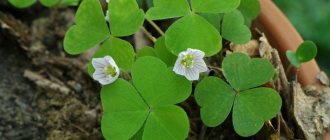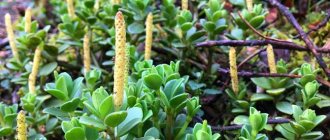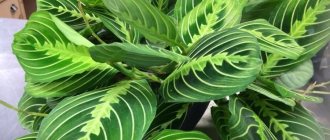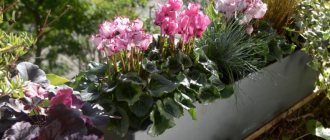general information
Syngonium is a compact African liana, the shoots of which are densely covered with beautiful variegated leaves. Moreover, depending on the type, they can be solid, dissected or lobed. The branches are covered with aerial roots, so that the syngonium clings to any suitable support.
Interestingly, with age, the shape and shade of syngonium leaves can change. There are plain, spotted, striped and variegated species, as well as species with silver streaks. The color range varies from milky to dark green. Leaf sizes reach 35 cm.
There is a belief that if someone is sick in the house, syngonium contributes to his speedy recovery. According to another legend, it helps fight insomnia.
Photo: stocvetov.ru
Benefits, signs and superstitions
In city conditions, syngonium is an excellent solution for apartments and houses. It not only perfectly refreshes the interior, but filters air masses, eliminating the negative effects of hazardous elements.
The plant acts as a stabilizer of the level of humidity and oxygen saturation of the air in the room . But superstitious people often wonder whether it is possible to keep syngonium at home from the point of view of folk wisdom.
Among the people there are absolutely opposite signs and superstitions associated with keeping syngonium at home. According to the interpretation of some, if a person is sick, then the vine will help the owner regain strength and fight a very serious and sometimes incurable disease.
The plant helps strengthen morale and get rid of bad habits. When the owner is tormented by nightmares, it will protect his sleep. In other signs, syngonium is considered a muzhegon: male representatives in the housing where this plant grows do not get along, and the owners face the fate of an old maid. But these are just superstitions that have no justification.
So, keeping such an exotic plant in the house will not cause trouble for the owner, but it will amaze him with its varied colors and have a beneficial effect on health.
Types of syngonium
Most often, syngoniums differ only in the shape and color of the leaves. Let's look at a few particularly spectacular and popular varieties!
Auricular syngonium
Its leaves do indeed slightly resemble drooping ears, but at the same time they are very elastic. And also large, wide, and a beautiful glossy green shade.
Photo: domashniecvety.ru
Pink syngonium
One of the most decorative species with a delicate pastel pink tint of leaves. Moreover, they are not monochromatic, but covered with brighter pink or, conversely, greenish spots.
Photo: bercocock.id
Syngonium Brocant
Its peculiarity is also in an unusual shade, only this time not pink, but chocolate brown. Against the background of elongated leaf plates, reddish veins stand out even more clearly.
Photo: m.nn.ru
Wendland Syngonium
This species is suitable for gardeners who prefer slow-growing plants. The leaves here are smaller, up to 18 cm, and resemble an arrow in shape. They also have an unusual velvety texture.
Photo: irkagro.ru
Syngonium Pixie
Compact syngonium with heart-shaped leaves is ideal for indoor cultivation. It has a delicate light green color with a silver tint and a darker edge.
Photo: instagram.com
Legleaf Syngonium
A tall, heat-loving species that has become the basis for many breeding hybrids. It grows quickly, and in a year it stretches up to 60 cm. The leaf plates really follow the shape of the foot.
Photo: youla.ru
Syngonium Butterfly
The most unpretentious syngonium even by the standards of this completely undemanding plant. The color can be almost any, depending on the variety.
Photo: vosadu-li-vogorode.ru
Indoor flowers: photos and names (catalog)
Syngonium care
Syngonium is a heat-loving and moisture-loving plant, but otherwise it does not have any specific requirements. Even a beginner can easily handle it!
Temperature
Syngonium feels most comfortable at a temperature of about +20 degrees. Small deviations will not affect the well-being of the plant. In winter, we recommend lowering the temperature to +18.
Photo: iprofiles.ru
Lighting
Despite its heat-loving nature, syngonium does not like direct sunlight. We recommend choosing slightly shady places or northern windows. Varieties with bright green leaves may even fade when exposed to too much light.
Photo: nanotank.ru
Watering
Regardless of the season, syngonium needs abundant regular watering. Make sure that the soil is constantly moist, but at the same time that the top layer has time to dry out.
Photo: fastbox.su
Humidity and spraying
Syngonium loves high humidity. In the warm season, regularly wipe and spray the leaves. In winter, move the flowerpot away from radiators and place it in a tray with wet expanded clay.
Photo: land-flowers.ru
The soil
Any neutral or slightly acidic soil is suitable for syngonium. But it must be very loose, because the plant loves moisture, and it cannot stagnate.
Photo: domashniecvety.ru
Fertilizers and fertilizing
Syngonium does not require mandatory feeding, but you can sometimes use liquid mixtures for deciduous plants from late spring to late summer. The optimal frequency is once every 3 weeks. Choose a composition with a minimum amount of calcium.
Photo: fastbox.su
Support
In order for the syngonium to grow better and look neater, it needs support. It is installed immediately when planting the plant, so as not to damage the root system later. Place the tube in the middle of the pot, dig it in, and then carefully spread the roots of the flower on top.
Photo: zen.yandex.ru
Transfer
Young plants need to be replanted every year, and adults - every few years. This will help refresh the soil and at the same time change the flowerpot to a larger diameter. We recommend carrying out the procedure in the spring. Several syngoniums can be planted in a large flowerpot at once.
Photo: o-remonte.com
Hamedorea (50 photos): types, cultivation and care at home
Features of growing indoors
Cultivating a plant in an apartment does not cause problems, but a number of nuances should be studied.
Landing
Syngonium is planted in small containers with drainage holes.
To obtain the splendor of the plant, several shoots are planted simultaneously in one pot.
This variety of vine can be used as a hanging plant if its stems are allowed to hang freely from the pot. Forming a crown will allow you to become the owner of a unique tree.
Advice! To get the shape of a tree, when planting in the ground, you should install a reliable support that will allow the vine to crawl upward.
Transfer
Young specimens are replanted every spring , but as they grow older, the interval between procedures increases. To ensure a successful transplant, the following steps must be followed:
- Place expanded clay at the bottom of the planting container as a drainage layer;
- pour loose and fertile soil with weak acidity on top - a soil mixture of turf, sand and peat;
- Using the transshipment technique to avoid damage to the roots, complete the replanting of the perennial.
Attention! An adult representative of the tropics needs to be replanted after roots appear from the drainage holes.
Care
Caring for the plant is quite simple. The love of gardeners for syngonium is caused by its unpretentiousness, rapid growth and vitality.
- Lighting. The flower requires a long period of diffused light. When placing the pot on the windows on the western or eastern side, we must not forget about protecting the vine from the scorching sun at its zenith.
- Temperature conditions. Throughout the year, with the exception of the winter season, when a decrease to 18°C is permissible, the optimal temperature is in the range from 22 to 25°C.
- Watering and humidity. Tropical liana needs high levels of humidity, systematic watering and spraying. Spraying of shoots is carried out daily with purified water at room temperature. The soil should be watered with the same water at short intervals: the soil should not dry out deeper than 3 cm. Regular moistening makes it easier for the plant to cope with air drought.
- Feeding. Fertilizers in the form of aqueous solutions of special mineral complexes for ornamental plants are applied under the crop at a distance from the stems. Fertilizing can be done from mid-spring to mid-autumn.
- Trimming. Lana has good pruning tolerance. The shoots are pinched for the first time after three pairs of leaves have formed. If necessary, you can shorten any process. If the stem has become too old and bare, then pruning promotes the development of young side shoots.
- Protection from diseases and pests. A native of the tropics has a well-developed immunity to diseases and pests. However, in case of improper care for a long time, it is affected by powdery mildew, and harmful insects such as spider mites, scale insects or mealybugs are observed on the foliage. If detected, protective measures should be taken - a hot shower up to 45C and treatment with the insecticide Actellik or Aktara.
Planting and propagation of syngonium
Syngonium is propagated by cuttings, each of which should have a bud. They are rooted immediately in loose soil in a warm place - at about +25 degrees. When the cuttings begin to grow, they can be planted in separate pots. At this time, you need abundant watering and regular spraying, and in the summer you also need shading from the sun. In order for the young syngonium to branch better, it is pinched above the sixth leaf.
Photo: mebeldom72.ru
Plant propagation
At home, syngonium propagation is carried out by the vegetative method - cuttings or lateral shoots . It is carried out at any time of the year, but the development of spring and summer cuttings occurs much more intensively. To successfully use this technique, you should follow these steps:
- a part of the shoot with 2-3 internodes and aerial roots is cut off;
- the cutting is placed in warm water with activated carbon or in a soil mixture of sand, moss and peat;
- before rooting, they are covered with a film to reduce moisture loss and create an optimal temperature regime for soil and air - 25-27°C;
- after rooting, the cover is removed;
- seedlings are grown by analogy with the mother specimen.
Advice! Before placing the cutting in the ground for rooting, it is recommended to treat the cut with a root growth stimulator.
This video shows in detail how syngonium is propagated:
Pest and disease control
Syngonium is almost never attacked by pests, but scale insects and aphids are sometimes encountered. Aphids hide on the undersides of leaves and cause them to turn yellow and curl. Scale insects spread throughout the plant and drink juices from it. In both cases, you cannot do without special medications.
With improper care and improper watering, the plant suffers from fungus. There are several diseases that it provokes, but you don’t have to distinguish between their subtleties. Modern fungicides have a complex effect. You just need to remove the affected leaves and shoots and treat the plant.
Photo: rastenievod.com
Date palm (50 photos): types, care and cultivation at home
Syngonium – photo
Syngonium is a simple, unpretentious, but at the same time very beautiful vine. It’s impossible not to pay attention to its decorative leaves!
Photo: greensotka.ru
Photo: domashniecvety.ru
Photo: srp.thehouseofchronic.com
Photo: vosadu-li-vogorode.ru
Photo: domashniecvety.ru
Photo: pinterest.ru
Photo: pinterest.com
Photo: forum.bestflowers.ru
Photo: forum.bestflowers.ru
Photo: orchidea-shop.ru
Photo: domashniecvety.ru
Photo: nabaty.wordpress.com
Photo: flowersbymail.ru
Photo: gvihardwares.com
Photo: domashniecvety.ru
Photo: ogorod-bez-hlopot.ru
Photo: fiftyflowers.ru
Photo: jubkiplus.ru
Photo: domashniecvety.ru
Photo: sadyeleny.rf
Photo: br39.ru
Photo: fastbox.su
Photo: sadovnikam.ru
Did you like the post? Subscribe to our channel in Yandex.Zen, it really helps us in our development!











